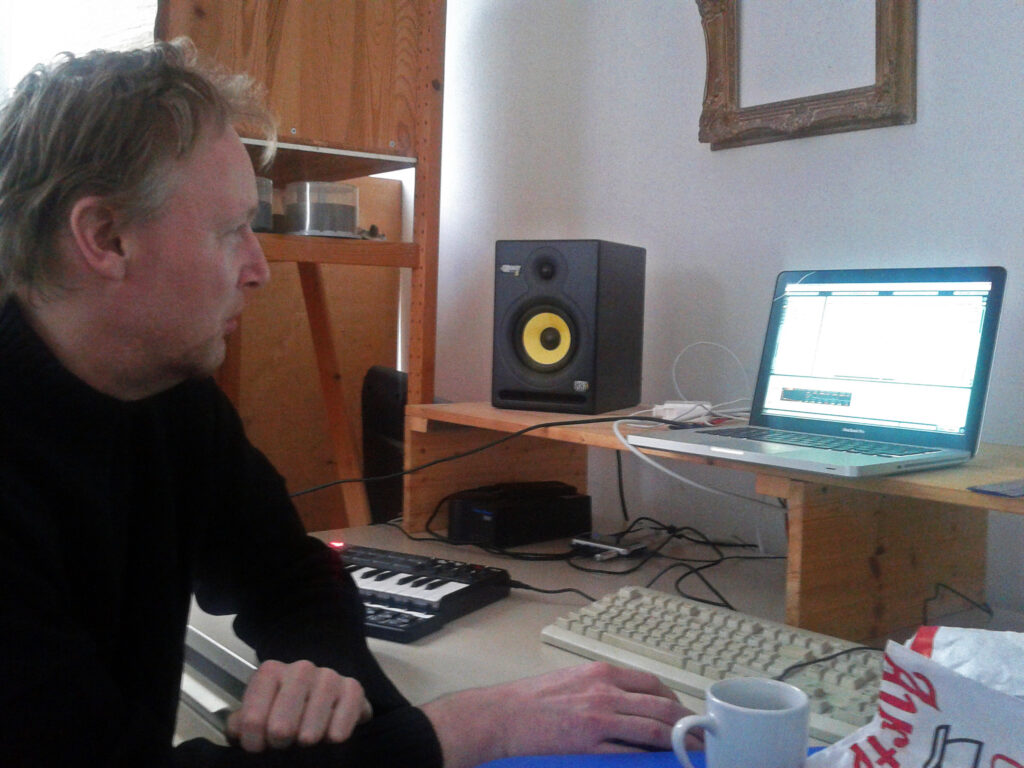
To celebrate Impossible Music, the first CD release on our own Hyperfunction label for algorithmic music, I had organized a mini-festival for algorithmic computer music at Cologne’s LOFT on Saturday, April 4, 2009.
We don’t know if the spring weather was too fair, the football games on TV were too tempting, or if the theme for the evening was not interesting enough to the Cologne audience, but only a few people showed up to see and hear the four computer music acts. Each of us played for roughly half an hour.
Tobias Reber from Bern (Switzerland) started with a laptop piece based on Max/MSP. Its shifting layers of electronic sequences and its microtonal electronic sounds reminded me of the magical and austere music of the early electronic pioneers.


Stefan Tiedje from Berlin had already presented his interactive Max/MSP based „Ondes Memorielles“ music system at the Loft when he performed at Cologne’s 1st International Livelooping Festival in May 2008. His new performance made use of two mobile microphones that circulated through the audience so that everyone could add their own sounds to the music.


Markus Reuter from Innsbruck played his new self-designed touch guitar through effect gear and Ableton Live algorithms and loops. His atonal music sounds sparse at the beginning but it eventually builds up to an enormous sound cloud, beautiful and at times menacing. The many variables going into a performance like this make the outcome unpredictable. On listening to his own set the next day, Markus wrote, „Is that really me? I’m surprised once again“.


Markus’s Centrozoon partner Bernhard Wöstheinrich had a strong feeling that my Impossible Music needed sounds different from the ones used on the CD, so when we played this evening’s last set, I was only responsible to generate suitable midi signals, and Bernhard translated them into sound with his synthesizer. Old technology met new technology – the Impossible Music algorithmic system is based on a fractal software called HOP that I wrote in the early nineties, and on this evening, it actually ran on a trusty ancient MS-DOS computer while the sounds were created using very recent synths and software.
I used a set of a dozen different fractal shapes to play with – the images, projected on a screen for the audience, were directly translated into midi signals, following some simple rules, and then into sound, so somehow what the audience saw corresponded to what they heard – not always in a very transparent way maybe, but nonetheless. Unfortunately, the images that look most pretty often turn out to create boring music, and some of the more boring images create the most interesting music, so sometimes the imagery that I used consisted just of a few dots or lines but they gave birth to surprising musical structures.


The HOP based algorithmic music engine will keep me busy for a while – there are so many interesting musical structures hidden in there. Here’s a short montage from the „rehearsals“ I did a week before the Hyperfunction evening.

The evening was an interesting experiment, demanding for the listeners at times, but also very rewarding (at least that’s what I was told by one excited visitor). And it was nice to see everyone again and to spend some time together.



















